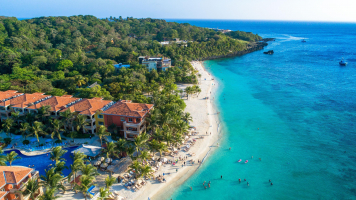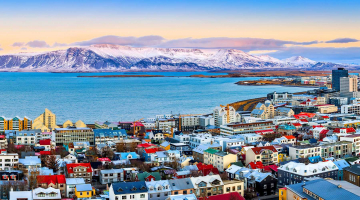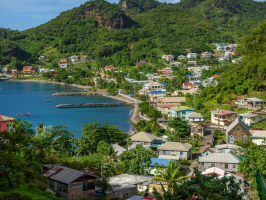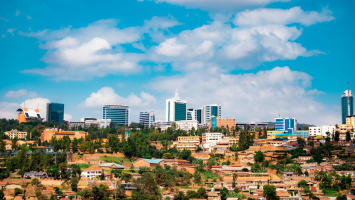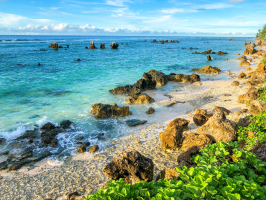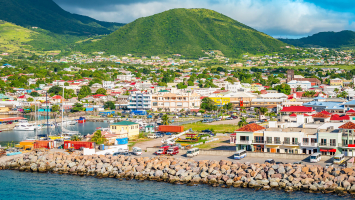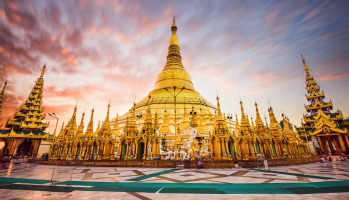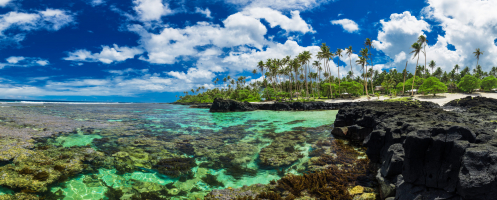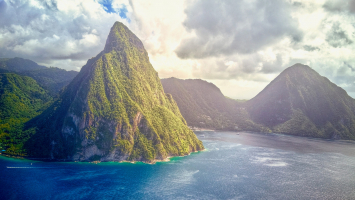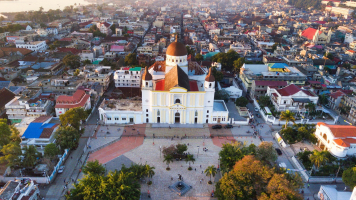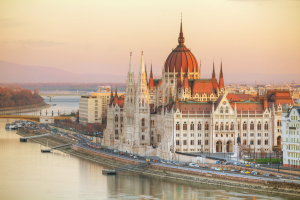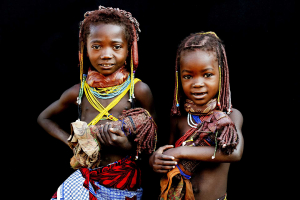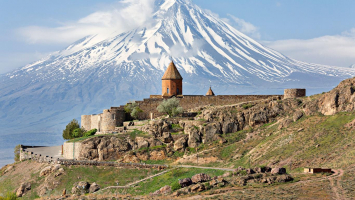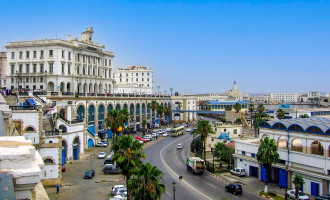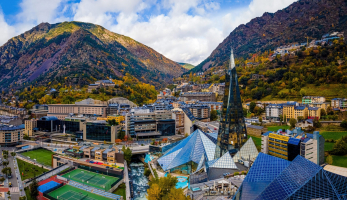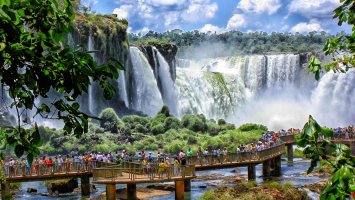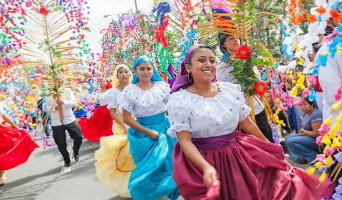Top 13 Unique Cultural Characteristics In Nepal
Nepal, formerly known as the Federal Democratic Republic of Nepal, is a landlocked South Asian country. Nepal's geography is diverse, with fertile plains, ... read more...subalpine forested hills, and eight of the world's ten tallest mountains, including Mount Everest, the highest point on the planet. Nepal is a multi-ethnic, multi-lingual, multi-religious, and multi-cultural country, with Nepali serving as the official language. Kathmandu is the capital and largest city of Nepal. Nepal's culture is as diverse as the ethnic-lingual groups of people who live there, and it shares some similarities with the cultures of neighboring countries such as India and Tibet while also having some unique and distinct features of its own. Toplist has compiled a list of the Unique Cultural Characteristics In Nepal that you can learn more about.
-
According to the 2011 National Census, 123 languages are spoken as a mother tongue (first language) in Nepal. This can be seen as one of the Unique Cultural Characteristics In Nepal. The majority are from the Indo-Aryan and Sino-Tibetan language families. The federal official working language is Nepali, but the constitution allows each province to choose one or more additional official working languages. On September 6, 2021, the Nepal Language Commission recommended 14 official languages for Nepal's various provinces. Nepali languages are sometimes used to refer to Nepal's mother tongues or languages of Nepali origin.
Nepal's linguistic heritage is comprised of three major language families: Indo-Aryan, Tibeto-Burman, and various indigenous language isolates. According to the 2011 census, the major languages of Nepal are Nepali (44.6%), Maithili (11.7%), Bhojpuri (6.0%), Tharu (5.8%), Tamang (5.1%), Nepal Bhasa (3.2%), Bajjika (3%) and Magar (3.0%), Doteli (3.0%), Urdu (2.6%), Awadhi (1.89%), and Sunwar. At least four indigenous sign languages exist in Nepal.
Nepali, a descendant of Sanskrit, is written in the Devanagari script. It is the official language of Nepal and serves as a lingua franca for Nepalis of various ethnolinguistic groups. Maithili, Awadhi, and Bhojpuri are regional languages spoken in the southern Terai region, and Urdu is widely spoken among Nepali Muslims. Tibetan dialects are spoken in and around the Himalayas, where standard literary Tibetan is widely understood by those with religious education. Local dialects in the Terai and hills are mostly unwritten, though efforts are being made to develop systems for writing many of them in Devanagari or the Roman alphabet.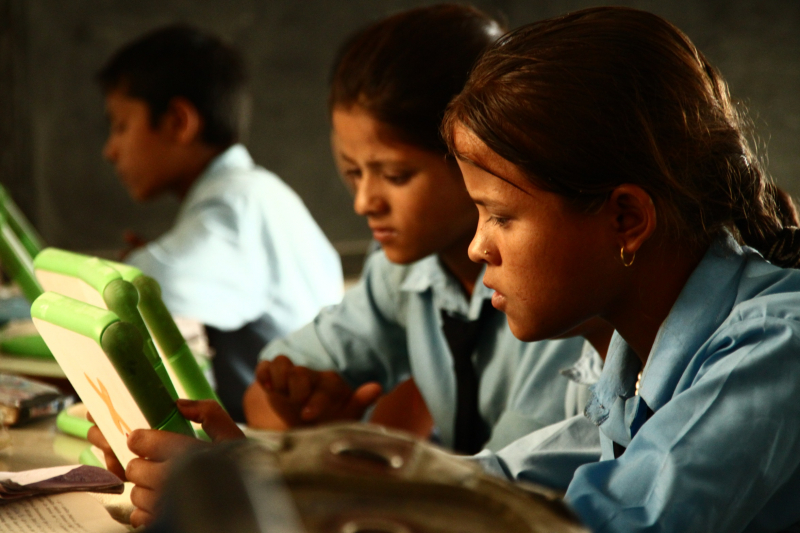
https://blogs.worldbank.org/ 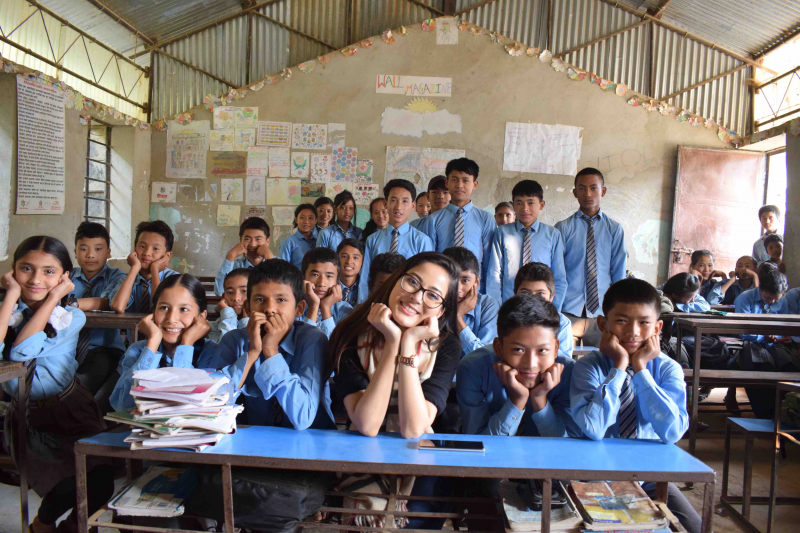
https://www.teachfornepal.org/ -
In Nepal, religion encompasses a wide range of groups and beliefs. Nepal is a secular nation, and the interim constitution defines secularism in Nepal as "religious, cultural freedom, along with the protection of religion, culture handed down from time immemorial," which means that "the state government is bound for protecting and fostering Hindu religion" while maintaining "religious" and "cultural" freedom throughout the nation as fundamental rights.
Hinduism and Buddhism are the most widely practiced religions in the Federal Democratic Republic of Nepal, accounting for 81.3% and 9.04% of the nation's overwhelming population in 2011, respectively. According to a survey, Nepal is the most religious Hindu-majority country in the world, with the majority of important Hindu pilgrimage centers concentrated here. Because Nepal is also the birthplace of Gautama Buddha, Buddhism holds a special place in the country and is frequently intertwined with Hinduism among some communities. Through democracy, it has become a multi-cultural, multi-ethnic, multi-lingual, and multi-religious nation. There are also small populations who follow Islam, Christianity, Sikhism, Jainism, Bön, and the Bahá' Faith, particularly in eastern Nepal.
Shiva is widely regarded as Nepal's guardian deity. Nepal is home to the world-famous Pashupatinath Temple, a UNESCO World Heritage Site to which Hindus from all over the world travel for pilgrimage. According to Hindu mythology, the goddess Sita of the epic Ramayana was born in King Janaka Raja's Mithila Kingdom. Nepal's national animal is the cow, which is considered sacred in Hinduism. As a result, cow slaughter is prohibited in Nepal.
The Nepali constitution also guarantees religious freedom. Forced conversion from Hinduism to other religions is illegal, especially when money is used as a direct or indirect inducement to convert, but anyone can convert from one religion to another of their own free will.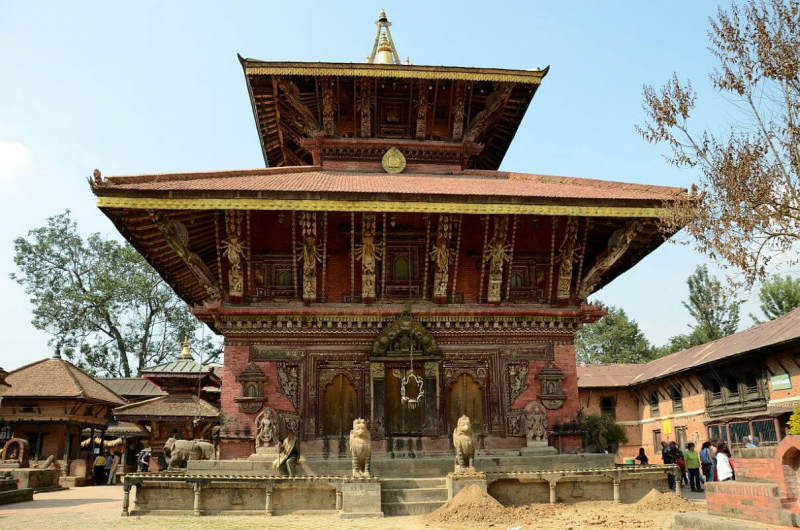
https://traveltriangle.com/ 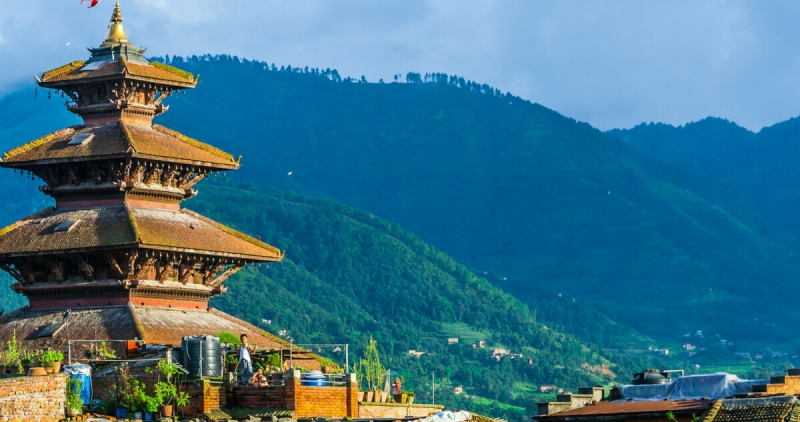
https://www.travelogyindia.com/ -
Nepali literature is the body of writings in Nepal's Nepali language. Prior to the Gurkha conquest of Nepal in 1768, Nepalese writings were in Sanskrit, Newari, and Nepali, in addition to Nepali. These writings included religious texts, chronicles, and gift-deeds, among other things. With the possible exception of the memoirs of Gurkha king Prithvi Narayan Shah, the existing Nepali material is more historical than literary in nature. Literary writing in Nepali began only in the nineteenth century.
Around 1830, a school of Nepali poets emerged who wrote in a language that was more Sanskrit than Nepali and heavily influenced by classical Sanskrit themes and poetic metres on themes from the Hindu epics Rāmāyaṇa and Bhāgavata-Purāṇa. They were followed in the mid-century by Bhānubhakta, whose Nepali version of the Rāmāyaṇa gained popularity for its colloquial flavor, religious sincerity, and realistic natural descriptions. In the early twentieth century, the poet Lekhnāth Pauḍyāl tended to the colloquial and used the rhythms of popular songs in some of his poems.
The work of Bālkrishṇa Sama, who wrote lyric poetry, plays based on Sanskrit and English models, and some short stories, marked the beginning of modern literature in Nepal in the 1920s and 1930s. Sama and his great contemporary, poet Lakṣmīprasād Devkoṭā, abandoned the earlier Sanskrit-dominated literary tradition in favor of Western literary forms such as prose poetry, tragic drama, and the short story. These poets addressed themes such as love and patriotism, as well as the problems of injustice, tyranny, and poverty that Nepal faced in the twentieth century.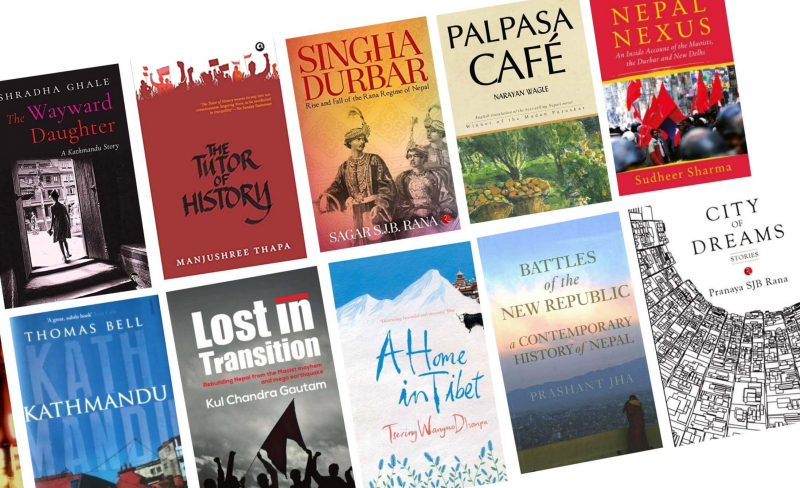
https://www.nepalitimes.com/ 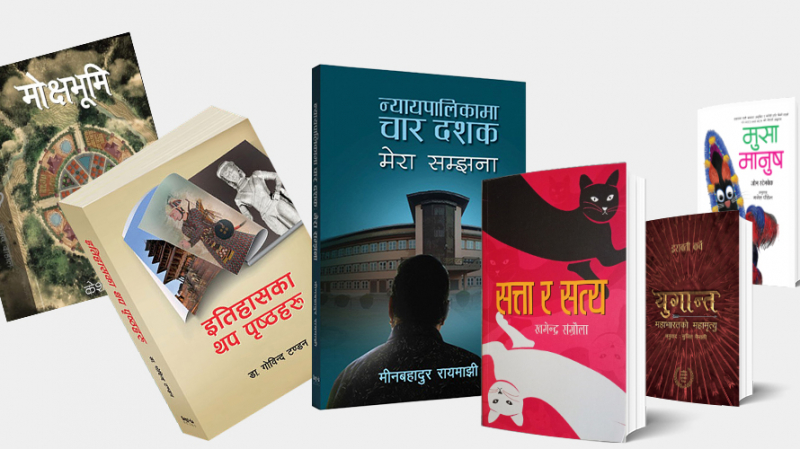
https://english.onlinekhabar.com/ -
Nepalese music refers to the various musical genres that are played and listened to in Nepal. Nepal's music is extremely diverse, owing to the country's more than fifty ethnic groups. Tamang Selo, Chyabrung, Dohori, Adhunik Geet, Bhajan, Filmi music, Ghazal, Classical music, songs, and Ratna music are popular, but many other less common genres have yet to be cataloged.
Western musical genres such as Rock, Metal, Hip-Hop, Rap, and R&B are also popular on Nepalese music charts. The Kathmandu valley is home to the majority of the country's musical bands. Tibetan and Indian musical genres have had a significant influence on Nepalese music.
The Damphu, a traditional instrument, is well known in the Tamang community. The Damphu and Tungna accompany Tamang Selo music. During their visit to India, the British are said to have gotten the idea for making drum sets from Damphu. Some contemporary Tamang Selo music incorporates elements of Western and Indian instruments. Dohori is a Nepali folk music genre with roots in rural courtship traditions. Dohori literally means "from both sides" or "discussion" in Nepali. This debate is set to music and includes quick and witty poetry. Adhunik Geet, also known as sugam sangeet, are popular songs in Nepal. These songs are gentle and melodic. This is one of the Unique Cultural Characteristics In Nepal.
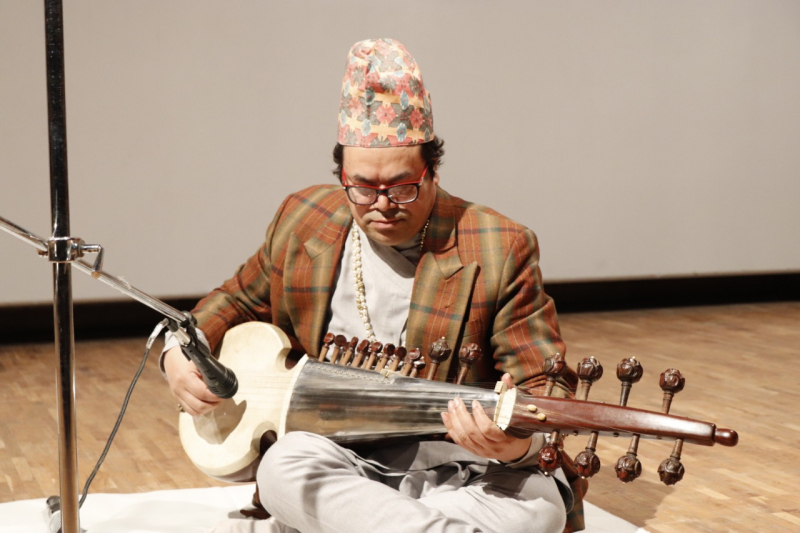
https://kathmandupost.com/ 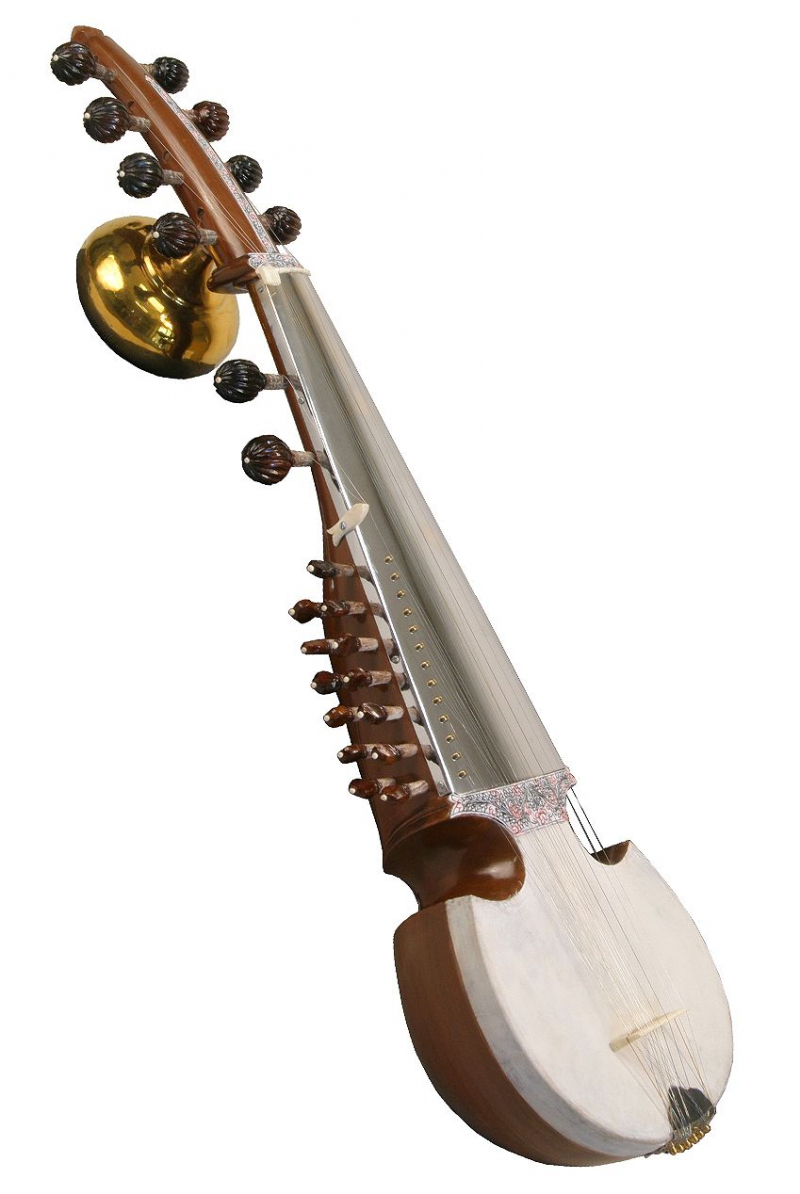
https://musicgallery.com.np/ -
Dance is a performing art form that consists of carefully chosen sequences of human movement. Dance in Nepal encompasses a wide range of styles, from folk to ethnic to classical to modern. Lakhey is a demon's dance in God's carnival. Durbar Square, a historic plaza in Kathmandu, Nepal, facing ancient palaces and adorned by Hindu temples, is always packed on the last day of Indra Jatra, the Hindu king of heaven's festival. Lakhe the demon dances relentlessly and carelessly among gods and deities on this divine stage.
Legend has it that dances in this country originated in Lord Shiva's abode, the Himalayas, where he performed the tandava dance. This indicates that Nepal's dance traditions are very ancient and distinct. The style and costumes of Nepalese dances vary according to altitude and ethnicity.
The Dishka, a wedding dance, features intricate footwork and arm movements. The accompanying music and musical instruments change in time with the themes, which include harvesting crops, marriage rites, war stories, a lonely girl's yearning for her love, and several other themes and stories from village life. Two highlights are the famous Tharu stick dances and the crazy peacock dance, but there are plenty of other surprises. As the evening progresses, expect to be invited to join in the dancing.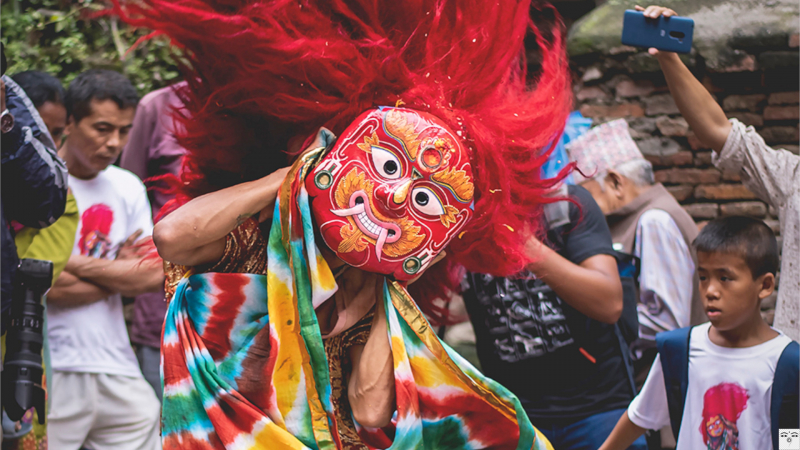
https://www.shankerhotel.com.np/ 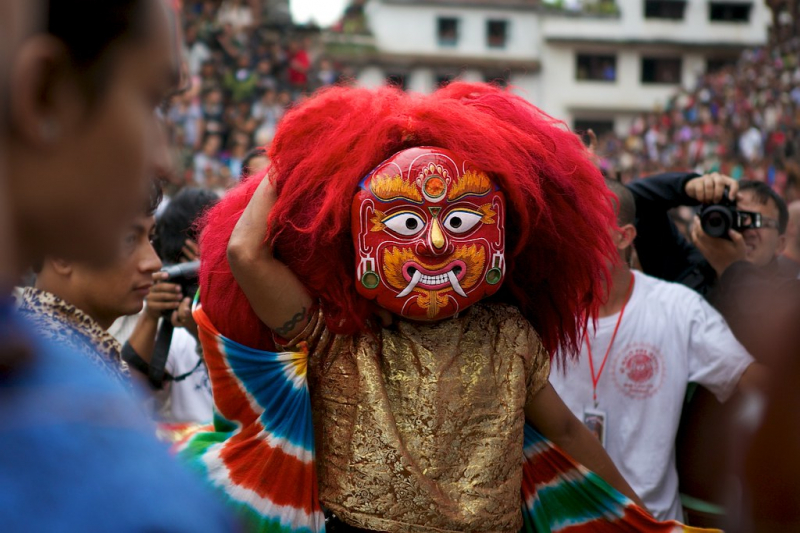
https://www.flickr.com/ -
Nepalese or Nepali painting begins with religious paintings with Hindu and Buddhist subjects, which are almost entirely Newari art by the Kathmandu valley's Newari people. These traditional paintings can be found as wall paintings, cloth paintings known as paubha, or manuscripts. For centuries, they used conservative technique, style, and iconography in their works. Manuscript illustrations found on palm leaves inspired Nepalese art painting. The earliest known illustrated manuscript in Nepal is the Astasahasrika Prajnaparamita (1015 AD). Religion has a huge influence on such manuscripts, which are typically decorated with mythical figures of divinities.
All illustrations depict gods and goddesses, whether Buddhist or Hindu in origin. They can be found in monasteries or temples. As a result, the painting quality is preserved for a long time, and the painting style remains relatively consistent. As a result, older Nepali art paintings are valued more than more recent manuscripts.Thangka paintings are traditional Nepalese paintings. These religious paintings, also known as Thangka in Tibetan and Paubha in Newari, were commonly used as icons in worship. The illuminated wall paintings were in high demand, so skilled artisans painted them on cloth before rolling them up and transporting them.
After 1850, Nepalese paintings are thought to have embraced western influences through the work of Bhajuman, a traditional artist who became acquainted with western Realism after visiting Europe. Bhajuman, also known as Bhajumacha Chitrakar, was a court painter for Jung Bahadur Rana after he became Prime Minister of Nepal in 1850.
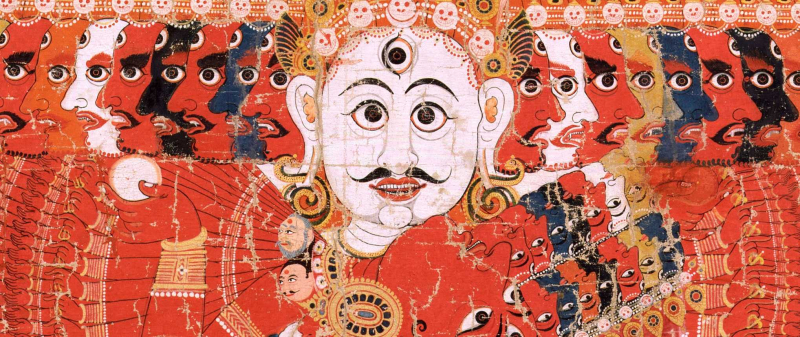
https://rubinmuseum.org/ 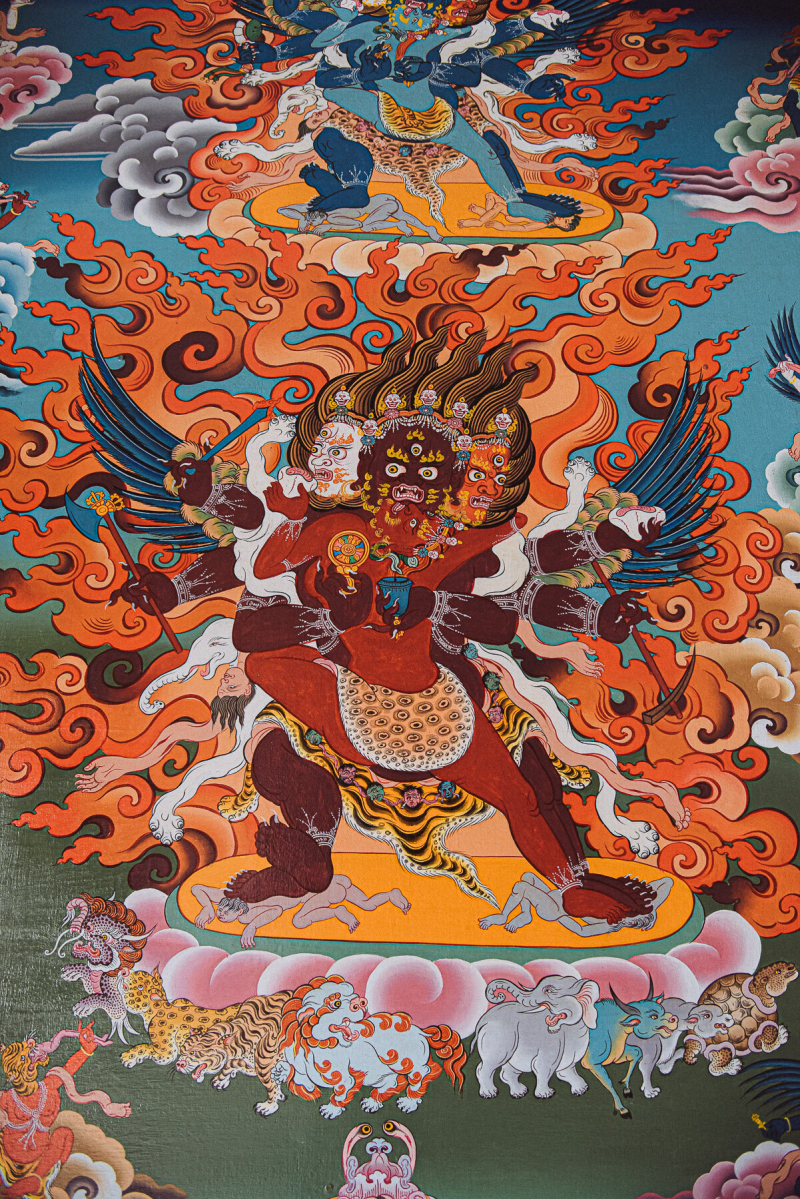
https://www.nomad-photos.com/ -
Nepali architecture, also known as Nepalese architecture, is a one-of-a-kind combination of artistic and practical considerations. Nepali architecture reflects influences from these cultural strongholds, as it is located between the trade routes of India, Tibet, and China. The pagoda architectural tradition is prominent in the country's Hindu temples. Buddhist temples, on the other hand, reflect the Tibetan tradition of Buddhist architecture, with the stupa prominently featured. Mugal, summit, and dome styles are also popular in Nepal.
Stupas of early Buddhist constructions in and around Kapilvastu in south-western Nepal, and those built by Ashoka in the Kathmandu Valley around 250 BC, are the oldest known examples of architecture in Nepal. The distinctive architecture associated solely with Nepal was developed and refined by Newa artisans of the Kathmandu Valley as early as the Lichchhavi period. Later Chinese chronicles describe Nepal's king's palace as an enormous structure with many roofs, implying that the Chinese were unfamiliar with pagoda architecture, which has now become a defining feature of Chinese architecture.
The "ankhijhyal" window, which provides a one-way view of the outside world, is an example of unique Nepali woodcraft found in domestic and public structures, ancient and modern. Many cultures paint their homes' walls with regular patterns, figures of gods and beasts, and religious symbols; others paint their walls plain, frequently with clay or chernozem contrasted with yellow soil or limestone. Roofs of religious and domestic structures protrude significantly, presumably to provide shade from the sun and rain. Domestic structures, like religious structures, have finely carved wood. It can be considered as one of the Unique Cultural Characteristics In Nepal.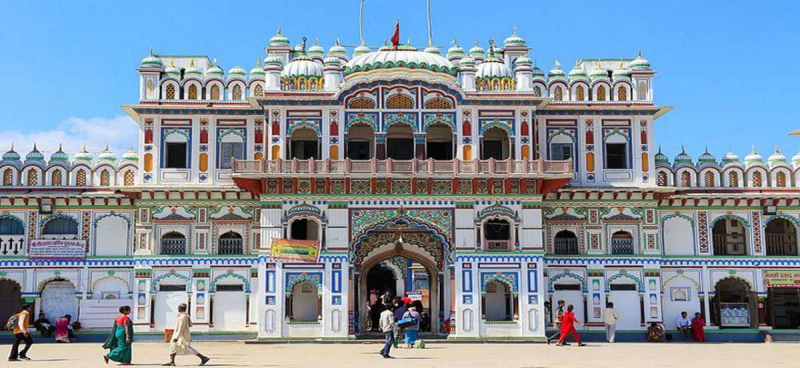
https://www.holidify.com/ 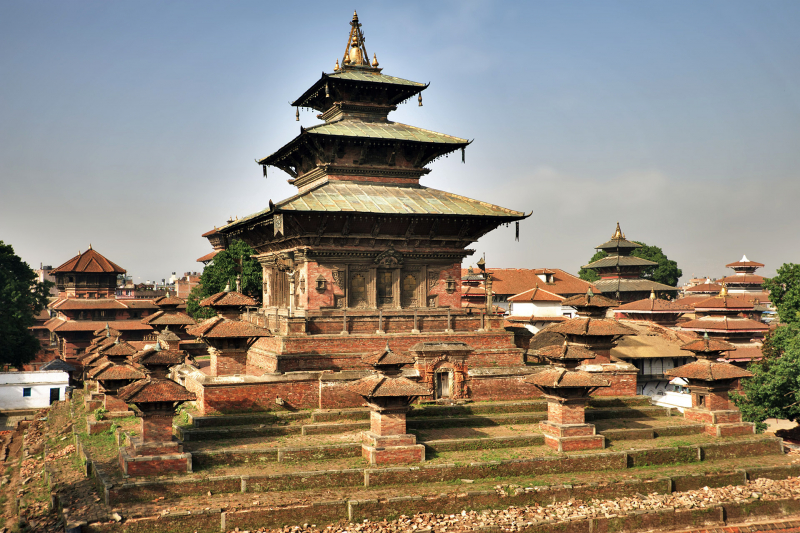
https://upload.wikimedia.org/ -
The men's traditional clothing is known as "Daura Suruwal" or "Labeda Suruwal." The main components are daura and suruwal; additional pieces include a vest or jacket and a headdress. The informal traditional outfit consists of a daura suruwal and a jacket. It appeared after the Queen of England presented the jacket to the country's Prime Minister. Following him, many men began to add a waistcoat or other European-style coat to their traditional clothing.
Nepali men's national headdress is known as the "Dhaka topi" or "Nepali topi." It is a skullcap, but its shape is unusual. The hat is made of "Dhaka" fabric and pattern. The patterns are similar but not identical - this cap has dozens of different patterns. Dhaka topi rose to prominence in the mid-twentieth century. This folk costume is no longer commonly worn by Nepali men, though it is still used for weddings, ceremonies, folk festivals, and other special occasions. Nepali men also wear a variety of other garments in everyday life and on special occasions. These are the "dhoti," "lungi," and "tapalan."
The Nepalese women's traditional costume is known as "Kurta Suruwal." It's made up of light baggy pants, a blouse, and a big scarf. In modern times, Nepali females frequently wear this outfit. A sari is another traditional Nepali women's dress. It is a must-have for any future bride because saris are commonly used as wedding gowns in this country. Sarees are also worn for important special occasions and ceremonies. The traditional saris of Nepal and India are identical. This fabric is wrapped around the waist and over one shoulder. Sari is typically paired with a lot of jewelry, particularly gold jewels.
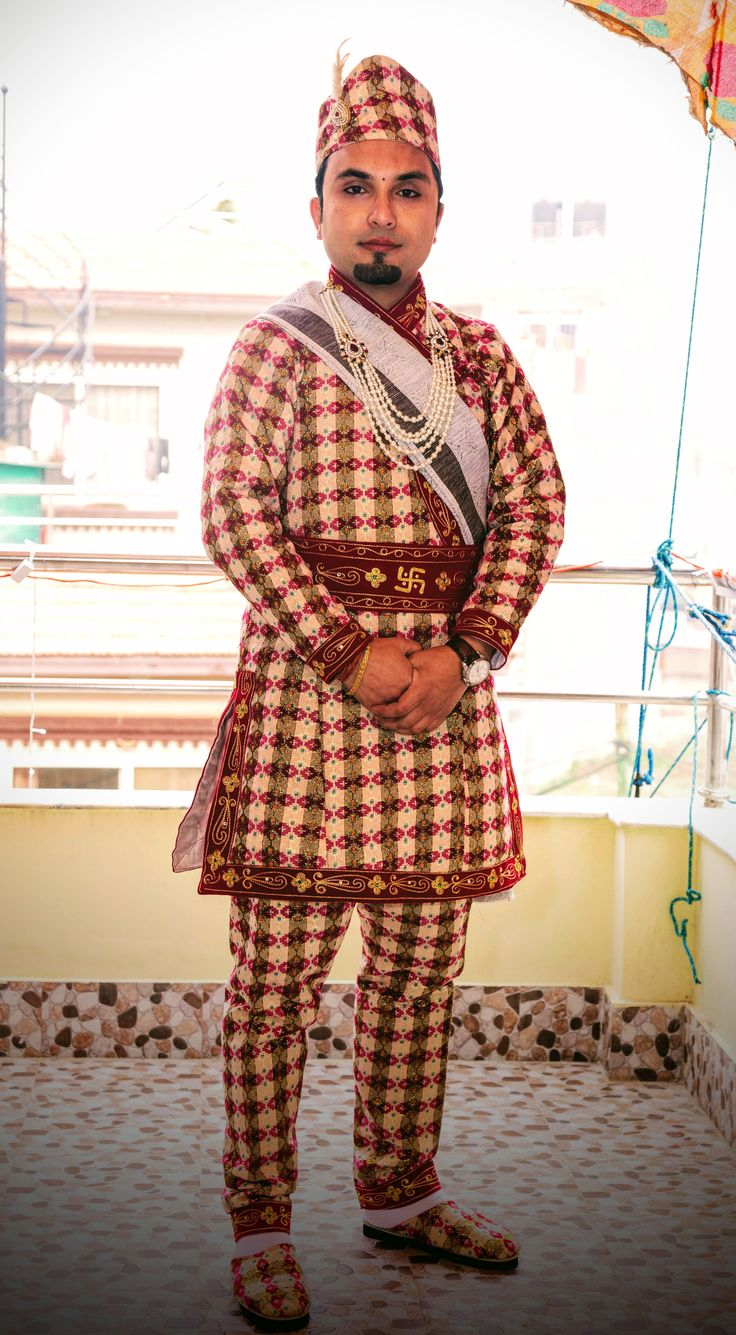
https://www.pinterest.com/ 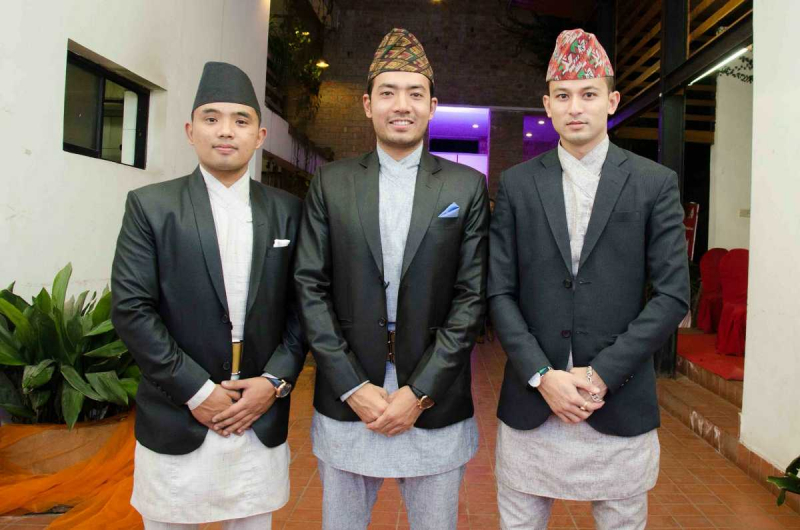
https://www.holidify.com/ -
Nepali indigenous sports, such as dandi biyo and kabaddi, which were once considered unofficial national sports, are still popular in rural areas. Despite efforts, standardization and development of dandi biyo have not been accomplished, and Kabaddi as a professional sport in Nepal is still in its infancy. Bagh-Chal, an ancient board game thought to have originated in Nepal, is still popular today and can be played on chalk-drawn boards with pebbles. Popular games include ludo, snakes and ladders, and carrom.
In 2017, volleyball was designated as Nepal's national sport. Tag, knucklebones, hopscotch, Duck, duck, goose, and lagori are popular children's games, while marbles, top, hoop rolling, and gully cricket are popular among boys. Rubber bands, or ranger bands cut from bike tyre tubes, can be bunched or chained together and used to play dodgeball, cat's cradle, jianzi, and a variety of skipping rope games by Nepali children.
Football and cricket are two of the most popular professional sports. Nepal competes in South Asian football but has never won the SAFF championships, the regional tournament. Basketball, volleyball, futsal, wrestling, competitive bodybuilding, and badminton are also popular sports. Women have achieved success in football, cricket, athletics, martial arts, badminton, and swimming. Nepal also fields players and national teams in a number of tournaments for disabled people, most notably men's and women's blind cricket.
https://english.onlinekhabar.com/ 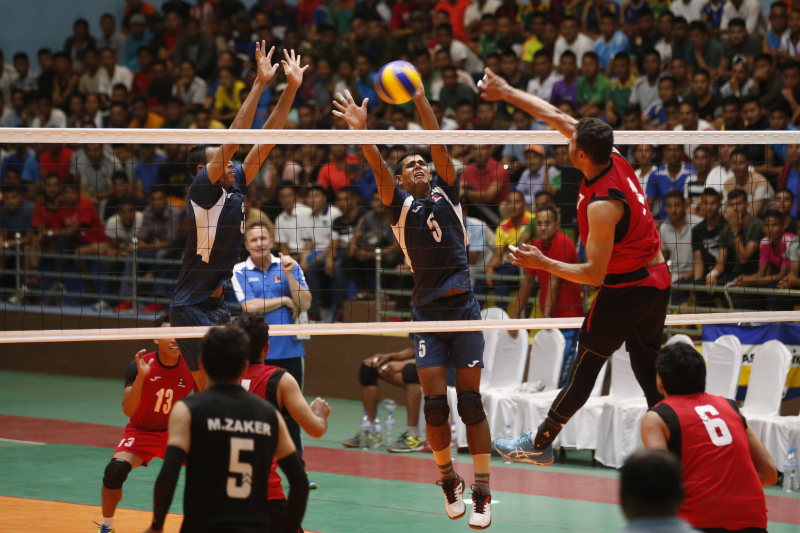
https://kathmandupost.com/ -
Several Nepalese festivals last from one to several days. As a predominantly Hindu and Buddhist country, the majority of Nepalese festivals are religious in nature. Nepal's festivals have Hindu roots, as Hinduism is practiced by more than 80% of the country's population. Buddhism, the nation's second-largest religion, which accounts for 9% of the population, has influenced Nepal's cultural festivals.
Dashain, also known as Vijaya Dashami, is Nepal's longest and most important festival. Dashain typically occurs between late September and mid-October, immediately following the end of the monsoon season. It is "a day of triumph over demons." Mohani, Tihar or Dipawali, Holi, Saraswati Puja, Rakshabandhan, Janmashtami, Gai Jatra, Nag Panchami, Teej, Chhath, Kartik Poornima, Maghe Sankranti, or Makar Sankranti are the Newar names for the festival. Maha Shivratri and Chhechu are two of Nepal's most important festivals. Nepal Sambat, the lunar calendar's New Year's Day, falls in November. Several Jatras are held throughout the year, and some regions have declared public holidays.
Other important festivals include Buddha Purnima (the celebration of Buddha's birth) and Maha Shivaratri (a Lord Shiva festival), during which some people drink excessively and smoke charas. Sherpas, who are mostly found at higher elevations and in the Mount Everest region, celebrate Mani Rimdu for the sake of the entire world. Most festivals include music and dancing, and a variety of special foods are consumed during festivals and special occasions. According to Tantric tradition, the Sagan ceremony is the ritualized presentation of five food items (boiled egg, smoked fish, meat, lentil cake, and rice wine) to a person in order to bring good fortune.
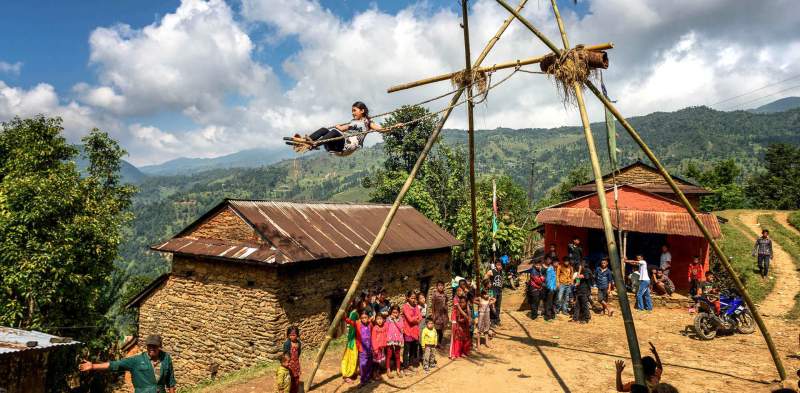
https://www.luxuryholidaynepal.com/ 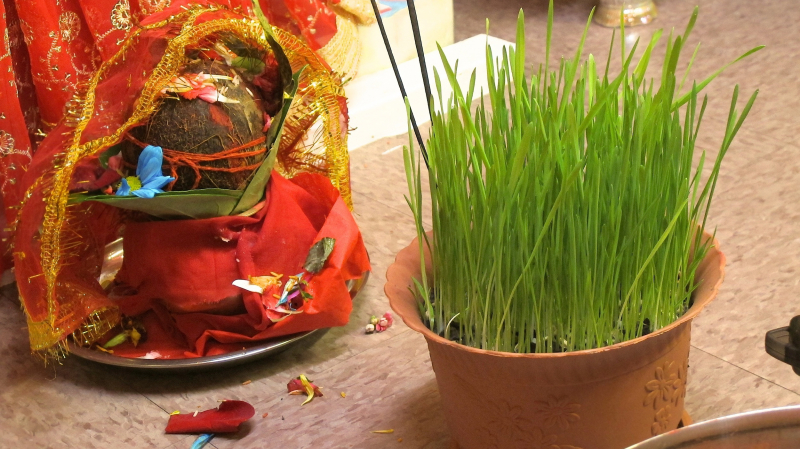
https://www.shankerhotel.com.np/ -
Nepalis are innately conservative when it comes to clothing, so be aware of how you may appear. The following tips are especially relevant in temples and monasteries. This is one of the Unique Cultural Characteristics In Nepal that you should know.
In public, men should always wear a shirt and, if possible, long trousers (shorts are fine on well-used trekking trails). A sari or skirt that falls to mid-calf is traditional for women in villages, though trousers are acceptable these days. Shoulders are usually covered, and vest-tops are frowned upon. Girls in Kathmandu and Pokhara do wear shorts or short skirts, but this is a new trend, and you risk being perceived as sexually available. In general, looking clean demonstrates and earns respect. Undressed travelers may be treated with significantly less courtesy.
Foreigners are expected to follow suit. The forehead is considered the most sacred part of the body in Nepal, and it is considered impolite to touch an adult Nepali's head. Because the feet are the dirtiest part, avoid putting them on chairs or tables, and avoid pointing the soles of your feet at anyone when sitting. Stepping over someone's seated legs is also impolite.
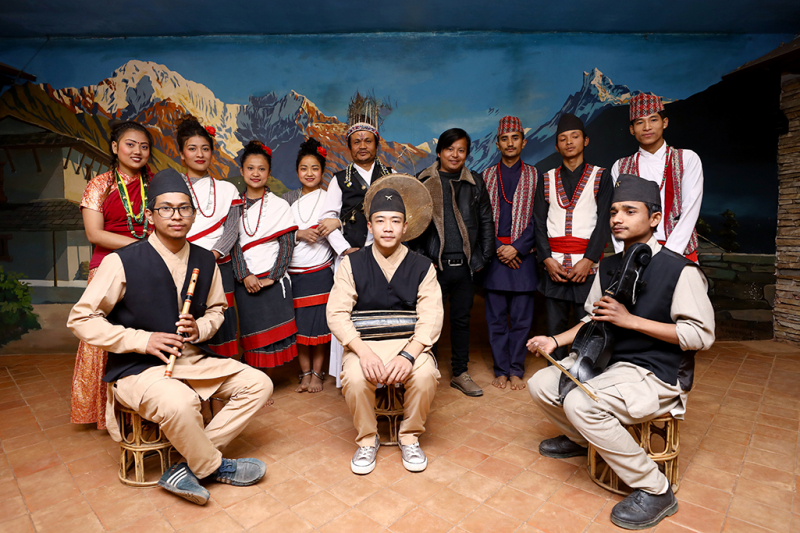
http://vajraadventure.com/ 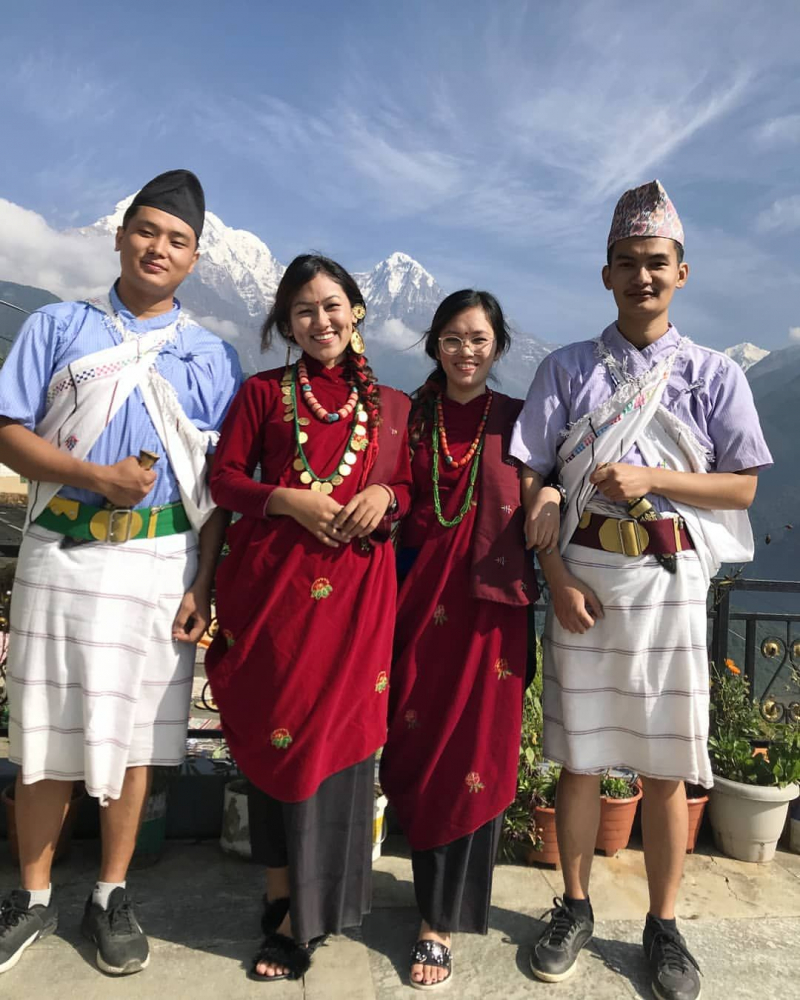
https://www.trendingnetnepal.com/ -
The majority of Nepali taboos are probably related to food. One underlying principle is that anything you touch with your lips becomes polluted (jutho) for everyone else. If you take a sip from someone else's water bottle, avoid letting it touch your lips (the same goes for your own). Don't eat off someone else's plate or offer anyone food you've sampled, and don't touch cooked food until you've purchased it. Always wash your hands and mouth before eating and again afterward.
When eating with your hands, only use the right one. The left hand is for washing after defecating; you can use it to hold a glass or utensil while eating, but don't use it to wipe your mouth or pass food. Giving and receiving everything with the right hand is considered polite. Offer money, food, or gifts with both hands, or with the right hand while the left touches the wrist, to show respect.
Try to eat less on your first serving so you can request a second. This is an excellent complement for the host. Hindus abstain from eating beef out of respect for the cow. Nepal as a whole has generally followed suit. While it is usually acceptable to eat it in front of a Nepali, do not offer them beef. Many Nepalis abstain from alcohol as well.
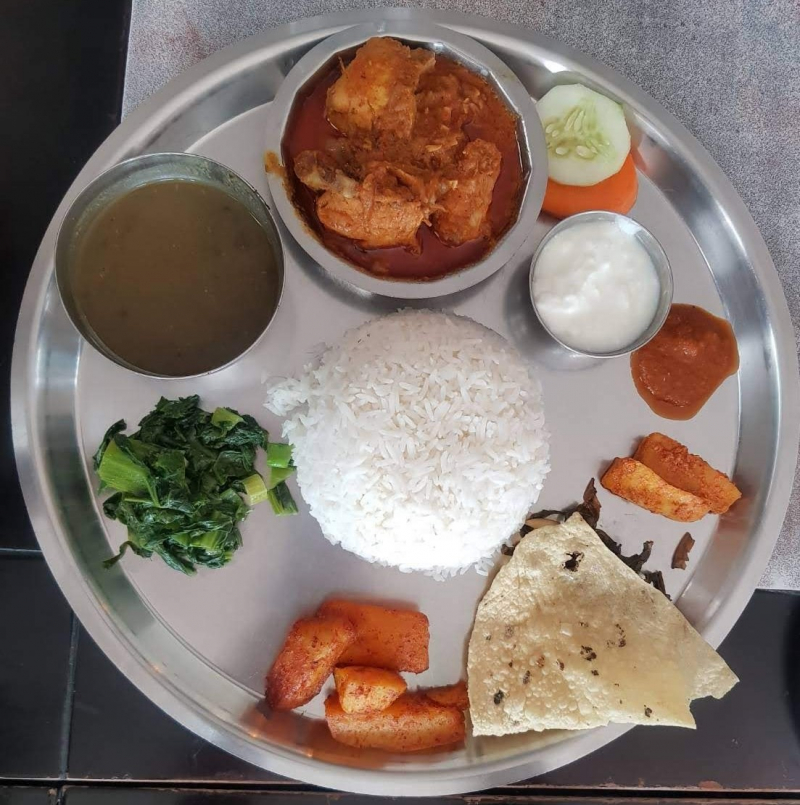
https://english.onlinekhabar.com/ 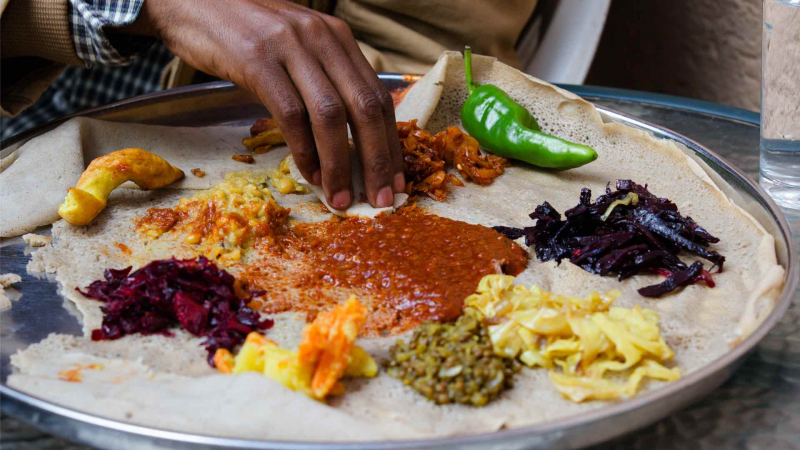
https://traveltank.com/ -
Being hospitable is an important quality in Nepal, and being a guest should not be taken lightly. People are frequently invited to have tea with someone in their home or shop because it is an honor to host. The common Nepali proverb "Guests are our god" exemplifies the generous approach to hosting. Even if you are extremely busy, it is polite to make time for a brief appearance if you have been invited to an event. Expect to be offered tea and accept it graciously, even if you don't drink it.
Many Nepalis enjoy surprises and may unexpectedly drop in on each other. They may be led to believe that Australians enjoy surprise visits as well. It is, however, considered impolite to invite yourself to join pre-arranged plans between other people. Wait for an invitation to join others. It is common for Nepalis to extend invitations at the last minute. As a result, if this occurs, do not interpret it to mean that your invitation was an afterthought. It most likely occurs to everyone.
Check the entrance to a person's home to see if they have left their shoes outside, indicating that you should remove yours. It is always polite to offer to do so before entering the home. As a guest, you will almost never be permitted to assist your host in preparing or cleaning up. Nepalese people usually socialize the most before eating. People usually leave as soon as the meal is finished. Some highlanders regard a household's hearth as sacred. Do not put trash or scraps in it.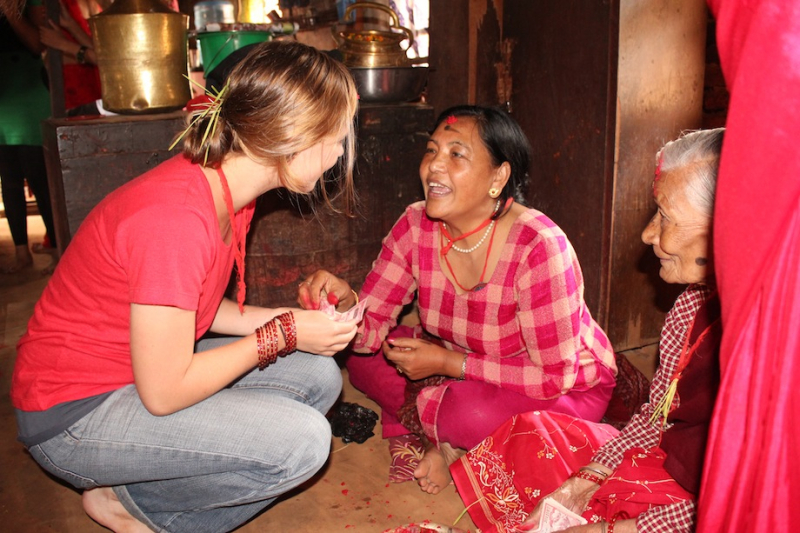
https://epicasiatravel.com/ 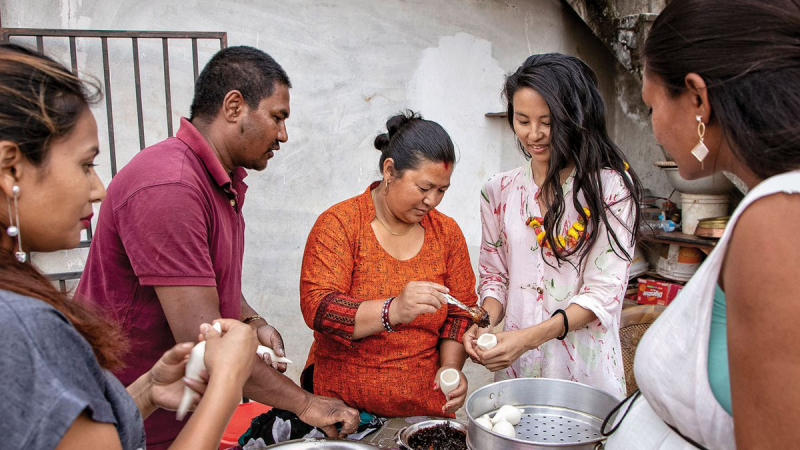
https://www.virtuoso.com/















